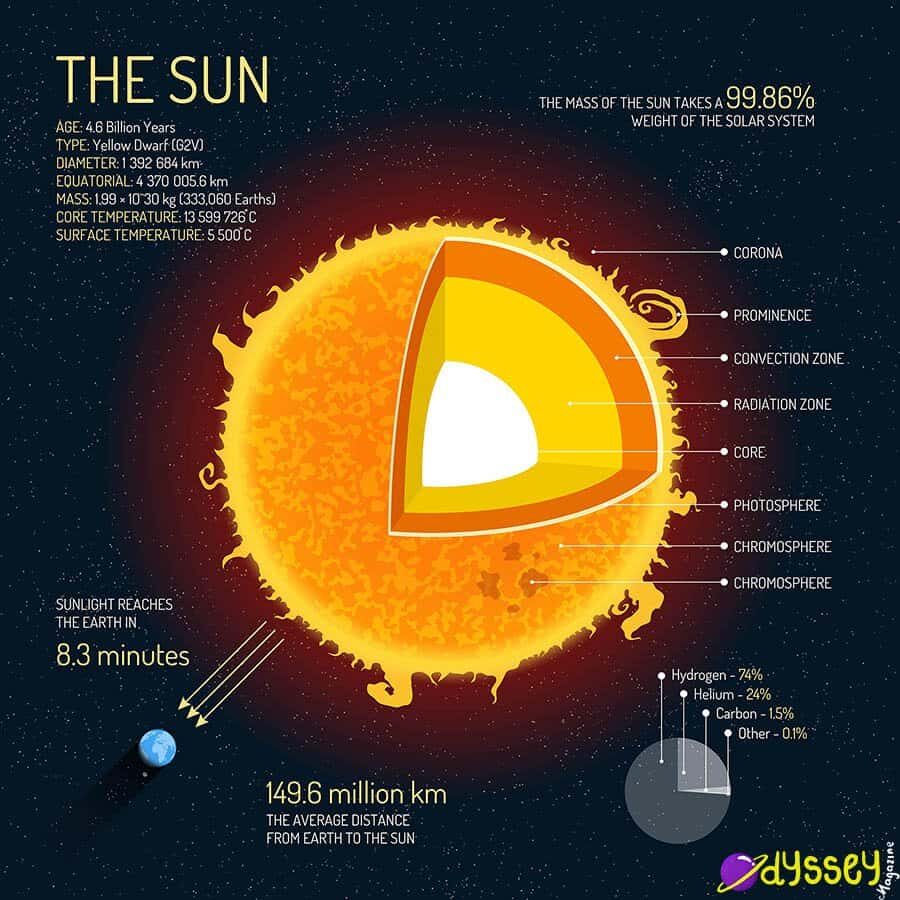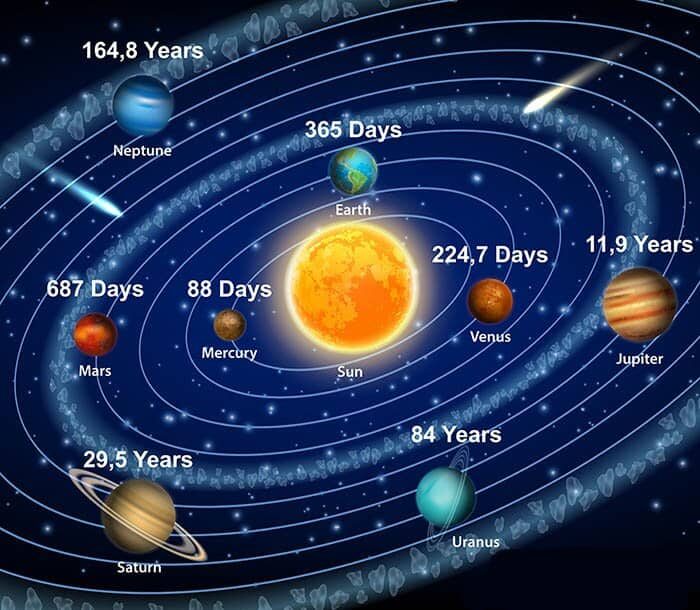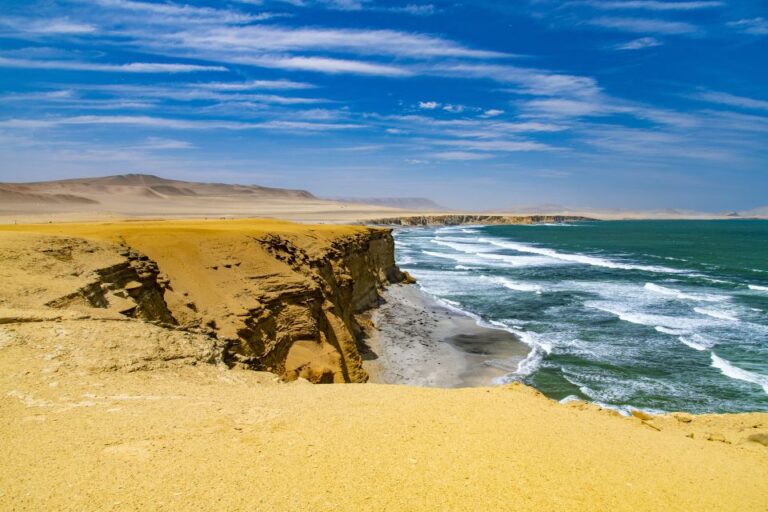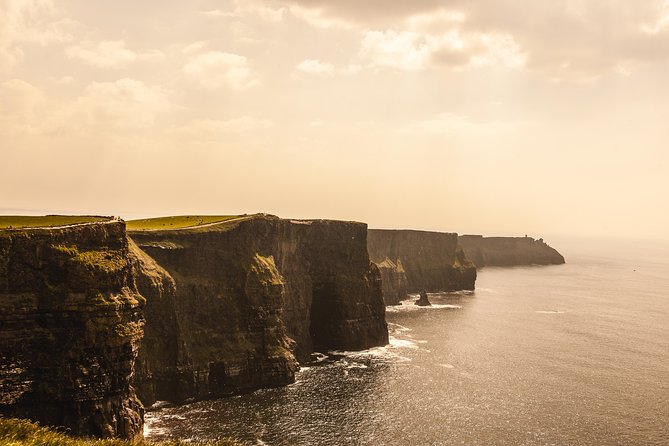20 Sun Facts | Mind-Blowing Facts about the Sun
The Sun is the center of our entire solar system and has been since it was formed more than 4.6 billion years ago. However, we haven’t always known that the Sun was the center of our solar system. It wasn’t until the 16th Century with Copernicus’s “Heliocentric” model that it was accepted that the planets actually revolved around this giant star. But why do they? Well, we’ll find out that and more when we look at these Sun facts.

- The radius of the Sun is approximately 432,450 miles (696,000 kilometers). This is more than 100x the radius of Earth.
- The Sun is approximately 74% hydrogen, 24% helium, 1.5% carbon and a trace amount of other gases.
- The two gas giant planets, Jupiter and Saturn, are also made up primarily of Hydrogen and Helium. This leads some astronomers to call them “failed stars”.
- The true color of the Sun is actually white, not yellow or orange, as it can appear to us from Earth.
- The gravity of the surface of the Sun is around 28x as powerful as the gravity of Earth.
- The name Sun, unlike the planets which are from Roman and Greek mythology, actually comes from old English.
- Like any other star, the Sun is made up primarily of hydrogen, with a less amount of helium. Between the two, it’s around 99% made from these two gases. But we still aren’t 100% sure what’s inside the Sun, and whether there’s another material in the mix.
- The surface of the Sun is very hot, and on average is around 5,500°c.
- However, this is nowhere near as hot as the Sun gets in its center, where temperatures can be in excess of 15,000,000°c.
- We generally split the Sun’s atmosphere into four different parts; the heliosphere, the corona, the transition region and the chromosphere.
One of the most misunderstood things about the Sun is why planets are even in orbit of it in the first place. And it can be difficult to understand. The short answer is “gravity”, but this doesn’t really explain why they’re orbiting the Sun and not being pulled into it.

The main thing to understand about why the planets orbit the Sun is that they are still moving. If the Sun wasn’t there, they would be still be moving in a direction, like the objects out in the Oort cloud that aren’t as affected by the gravity of the Sun.
So the planets are moving, but the pull of the Sun’s gravity is pulling them in just enough for them to be attached to the Sun, but not enough for them to be pulled into the Sun. So, they end up in orbit of the Sun (this is why satellites and moons orbit our planets, too!).
- The Sun is actually a star. There are an estimated 100 thousand million stars in our Milky Way alone.
- We classify the Sun as a G-type main sequence star, and a yellow dwarf star.
- Billions of years in the future, the Sun will actually grow to absorb Mercury, Venus and even our planet Earth.
- After this growth, the Sun will run out of hydrogen. Astronomers predicts that the Sun has another 7-10 billion years left before it dies out.
- It takes approximately 499 seconds for light to travel all the way from the Sun to the Earth.
- We use the AU, or astronomical unit, measurement system when talking about distances in our galaxy. This is the distance between the Sun and Earth, around 93 million miles (150 million kilometers).
- The Sun is so huge that it takes up around 99.8% of the mass in our entire solar system. That includes all the planets, asteroids and everything else.
- To us, the Sun is huge. But there are many more stars like the Sun in different solar systems which are much larger.
- The Sun is very close to being a perfect sphere. It is the closest thing to a perfect sphere, in nature, in our entire solar system.
- A total solar eclipse, when the moon blocks out the Sun, happens once every 18 months. But, it will usually only appear in certain places on Earth.
As I mentioned earlier, the actual color of the Sun is white, although it can look to us like it is yellow, orange or even shades of red. The reality is that the color of the energy that the Sun emits, all mixed together, is white. However, as we see it, these colors are scattered by the Earth’s atmosphere, especially the blue colors, which is why the sky is colored blue. This leaves the Sun appearing to us as a yellow or orange color.
Another common question about the Sun is whether it rotates. The Sun does rotate, but not like any of the planets, so it’s a little more difficult to explain. The Sun is made up of gas, not solid materials like Earth. This means that different points on the Sun will actually rotate at different times and speeds. If we look at the Sun’s equator, this rotates fully every 24-25 days. But at the top and bottom of the Sun (the North and South pole), this can take 36 days to rotate fully.
The Sun is made of gas, which is charged by it’s electric energy. This created a magnetic field, which spreads throughout our entire solar system, carried by a solar wind. After 11 years, the magnetic field of the Sun effectively flips, so the North pole becomes the South, and vice versa. Then it another 11 years, they flip back, and so on.
We know now that the Sun is the center of our solar system. But, we haven’t always known this to be the case. We call this “heliocentrism”, the planets revolving around the Sun. Though it was theorized thousands of years ago, astronomers used to think the Earth was the center of the universe. It wasn’t until Copernicus published On the Revolutions of the Celestial Spheres in the 15th century that astronomers started to accept that the Sun was actually the center of the solar system.
The reality is that the Sun really isn’t very big at all when compared to other stars out there in the universe. It is bigger than many stars, but there are a lot of stars out there that are bigger than the Sun. The Sun only looks big to us on Earth because we’re so close to it.
The Sun is the center of our solar system, but it is just one of many millions of stars out there in the universe. However, astronomers do think that our circumstance, with eight planets revolving around a giant star, is actually quite rare based on our findings. So whilst the Sun isn’t the biggest star out there, it certainly is unique.
Once a star is progressing through the Red Giant phase, it is actually starting to die at this point, and eventually the star will eventually become a supernova – the Sun is not quite at this stage yet though, as it’s classified as a yellow giant. And without the Sun, pretty much everything living on our planet Earth would cease to exist. We need the Sun for photosynthesis; and a whole lot more than this too.




